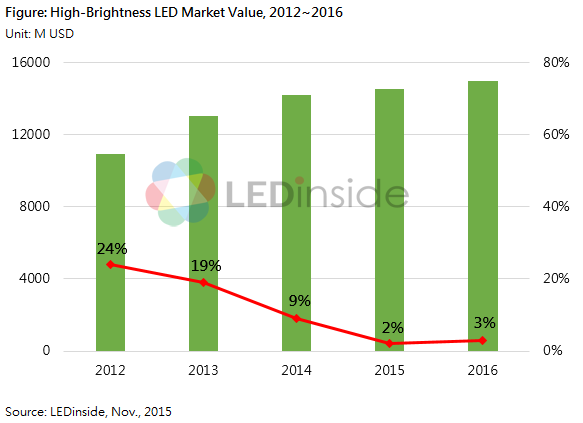News
Contact Us

Contact: YI
Phone: 0086 13632851264
Contact: Emma
Phone: 0086 13242308946
Contact: Selena
Phone: 0086 19154915671
Fax: 0086 0755 27655213
Email: liu@fitlight-tech.com
Add: 10th floor, building C1, Songhu Zhigu building, No. 9, Yanhe South Road, Liaobu Town, Dongguan City, Guangdong Province, China.
Location :News
LED Market Saturation Driving Manufacturers to Seek Niche Market Applications in 2016
Date:--
Publisher:
LED Market Saturation Driving Manufacturers to Seek Niche Market Applications in 2016
Light-emitting diode (LED) manufacturers had an especially tough year in 2015. “Despite rising LED lighting market demand and the large scale replacement of traditional lighting products, the oversupply situation has caused the average LED sales prices (ASPs) to plunge 30% to 40% year on year,” said Roger Chu, research director for LEDinside, a division of TrendForce. “Growing number of manufacturers have incurred heavy losses and exiting the market.”
LEDinside estimates that the value of the global high-brightness LED market will increase by just 2% year on year to US$14.52 billion in 2015 and by another mere 3% year on year to US$14.95 billion in 2016. Even though lighting demand has spurred LED usage volume growth, the ongoing increase in LED’s luminous efficacy has the opposite effect of reducing usage volume. Additionally, LEDs are still under an immense downward price pressure. Based on these observations, LEDinside projects that in the next five years the LED industry’s compound annual growth rate (CAGR) is unlikely to reach more than 10% as before.
 |
Listed below are five major trends that will shape the LED industry in 2016:
Price decline to moderate in LED market as more manufacturers make their exits
Demand in LED backlight and lighting markets has been lower than expected this year, which has caused sliding ASPs of LED chips and LED packages. This trend has been markedly observed during this year’s second half, when LED chip and package prices have sharply plunged to point that prices of some products are now close to material costs. Facing losses, manufacturers are being pressured to lower their prices in the short term. However, prices are now almost equal to production costs for many of them. As more companies drop out of the chip and package markets, further LED price cuts will be limited.
Chinese LED manufacturers start acquiring foreign companies to transform their business models
Chu noted that Chinese LED enterprises are now in a strong position to make merger and acquisition deals after raising funds from the stock market and receiving government backing. Their targets are major international LED players’ patents and lighting brands, which the Chinese hope will strengthen their patent portfolios and overseas distribution channels. Additionally, more Chinese LED manufacturers are also transforming their business models. Mergers and acquisitions are a way for them to leave the hotly contended red sea markets and enter other market sectors. (from www.ledinside.com)
Previous:Nothing
Next:Nothing
